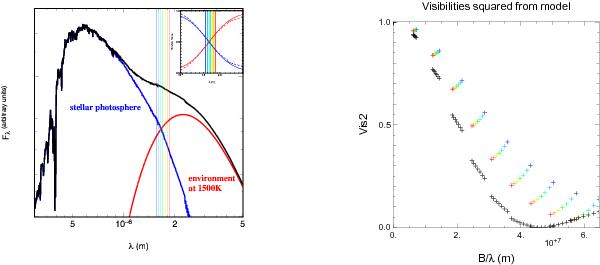Fig. 1

Left: SED of a young stellar object. In blue: the stellar photosphere (represented as a black body) at 10 000 K; in red: the environment black body at 1500 K; and in black: the sum of the two contributions. The vertical color lines are the spectral channels of PIONIER. The two contributions cross in the H band. In the top right corner as a dashed line: the flux ratios of every component from the SED, as a full line: the result of modeling the fluxes with power laws. Right: in black, expected visibilities from the extended structure alone. In color: the star contribution has been added and colors follow the standard color code (blue: shortest wavelength, red: longest wavelength). The visibilities increase with shorter wavelengths because the stellar contribution is higher.
Current usage metrics show cumulative count of Article Views (full-text article views including HTML views, PDF and ePub downloads, according to the available data) and Abstracts Views on Vision4Press platform.
Data correspond to usage on the plateform after 2015. The current usage metrics is available 48-96 hours after online publication and is updated daily on week days.
Initial download of the metrics may take a while.


